 |  |
Kukri knives
Nepalese Kukri or Khukuri knives maintain their special place in the world of knives. They are known for their unique design and multiple uses. It is an iconic weapon and a cultural symbol with a history of its own. By understanding the intricacy and versatility of the kukri knife's design, its craftsmanship, we gain a deeper appreciation of its significance as a revered cultural artifact that holds a special place in the hearts and minds of people around the world. Kukri knives are more than ordinary knives. They are a symbol of heritage and functionality. Kukri or Khukri comes from the mountainous areas of Nepal. The design of this knife has evolved over the centuries into the form we know it today. It was shaped by users, their daily needs and challenges. From a simple agricultural tool, the kukri knife became synonymous with bravery and honor and a memento of the resilience and resourcefulness of the Nepali people. Its unique design and multi-functional capabilities make it a valuable tool.

Parts of the Kukri knife
Blade
The heart of the knife is its distinctive blade with a typical inward curve. This curvature allows chopping while maintaining a sharp tip for stabbing and slicing. The blade is made of carbon steel, so it is durable and able to withstand daily use.
Handle
The handle of the kukri knife is carefully designed to provide a comfortable and secure grip, which is essential for reliable and efficient blade control. Traditionally, the handle is made of wood or horn, modern variations may contain synthetic materials for more durability and grip. In our offer you will also find kukri knives with decorative handles, which also include brass or bronze plates.The ergonomic shape of the handle ensures optimal control and good maneuverability, allowing users to control the kukri knife with precision and confidence.
Spine
The spine of the kukri knife also plays a key role in its functionality. It is thicker towards the base and tapers towards the tip. This adds weight and balance to the blade, increasing its chopping power.
Functional aspects
Blade
The cutting edge of the kukri knife is precisely made to maximize its cutting ability. Thanks to the slight curvature near the tip, the blade excels both in chopping and slicing. The angle and bevel of the edge are carefully honed to achieve a balance between sharpness and durability, ensuring that the kukri knife remains effective even after prolonged use.
Weight distribution
One of the key factors that contribute to the effectiveness of the kukri knife is its well-balanced weight distribution. Mass concentrated towards the front of the blade increases chopping power, allowing the user to produce maximum power with minimum effort. This balance also facilitates precise control during complex cutting operations, making the kukri a truly versatile tool in a variety of situations.
Cultural significance
Symbolism in Nepalese culture
In Nepali culture, kukri knives have a deep symbolic meaning, representing bravery, loyalty and strength. It has been an integral part of Nepali rituals and ceremonies for centuries. As a symbol of national identity, the khukri is also highly revered by the Gurkha soldiers and the Nepali people in general. Kukri embodies the spirit of resilience and determination.
Rituals and ceremonies involving the Kukri
Kukri or Khukuri knives play a central role in various Nepali rituals and ceremonies, from weddings and births to funerals and religious celebrations. Its presence in the ceremony signifies protection, prosperity and honor and is often passed down from generation to generation as a precious heirloom. During ceremonies such as Dashain (a celebration of the victory of good over evil), the kukri is prominently displayed and worshiped as a symbol of divine power and protection.
Influence on contemporary culture and media
In addition to its cultural significance, the kukri knife has also left its mark on contemporary culture and media. From its portrayal in movies and literature, to its adoption by outdoor enthusiasts, the kukri continues to pique the curiosity of people around the world. Its iconic shape and history have earned it the status of one of the most famous and respected blades in the world.
Traditional use in everyday life
In Nepal and other regions where the kukri is used, it serves as a versatile tool for everyday tasks such as chopping wood, preparing food or making tools and implements. Its compact dimensions and robust construction make it ideal for use in remote rural areas where access to modern tools is often limited.
Military and combat use
In military circles, the kukri knife is known for its effectiveness in close combat situations. Renowned for their skill and bravery, the Gurkhas, Nepal's elite soldiers, wielded the kukri with deadly precision on battlefields around the world. The combination of stabbing power and versatility make it a formidable weapon in the hands of a trained fighter.
Survival and outdoor use
For outdoor enthusiasts and adventurers, the kukri knife is an indispensable tool for survival in the wilderness. The ability to chop, slice and stab in one tool makes the kukri knife invaluable for tasks such as building a shelter, starting a fire and preparing food. Having a kukri knife handy can mean the difference between life and death.
Maintenance and care
Proper maintenance is essential to ensure the longevity and performance of your kukri knife. The blade should be thoroughly cleaned and dried after each use to prevent corrosion. Periodic oiling is also important to keep the blade in optimal condition. Regular sharpening to maintain a sharp edge is a matter of course.To extend the life of your kukri knife, it is important to treat it with care and respect. Do not subject it to unnecessary stress and store it in a dry environment away from moisture and extreme temperatures and of course out of the reach of children and unauthorized persons.
- Price
- Khukri knife stand
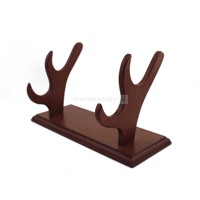
- 12.90 €price
- Availabilityavailable
- practical stand for Kukri knives
- Kukri knife Nepal traditional 6''
- New
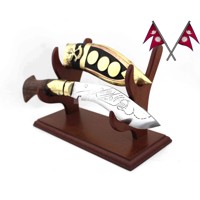
- 59.00 €price
- Availabilityavailable
- Original Nepalese Kukri knife in a case
- Kukri knife Ornamental 5'' nr.1
- New
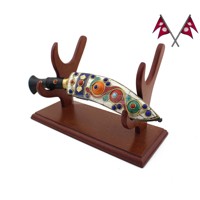
- 60.00 €price
- Availabilityavailable
- Original Nepalese Kukri knife in a beautiful case
- Kukri knife Ornamental 5'' nr.2
- New
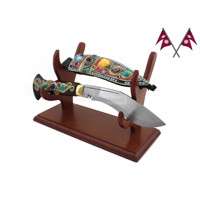
- 69.00 €price
- Availabilityavailable
- Original Nepalese Kukri knife in a decorative case
- Kukri knife Nepal red case traditional 7''
- New
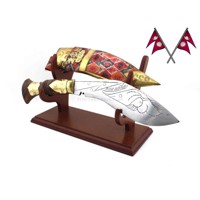
- 69.00 €price
- Availabilityavailable
- Original Nepalese Kukri knife in a case
- Kukri knife Nepal traditional 7''
- New
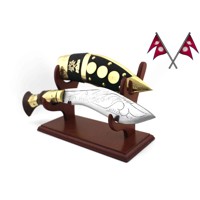
- 75.00 €price
- Availabilityavailable
- Original Nepalese Kukri knife in a case
- Kukri knife Horn 6"
- New
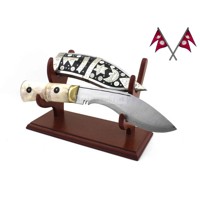
- 95.00 €price
- Availabilityavailable
- Original Nepalese Kukri knife with horn handle
- Kukri knife Horn 7"
- New
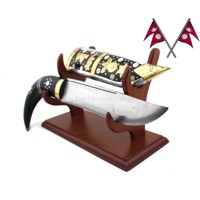
- 99.00 €price
- Availabilityavailable
- Original Nepalese Kukri knife with horn handle
- Kukri knife Nepal traditional 9''
- Newdoprava zdarma
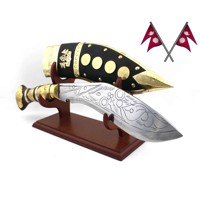
- 105.00 €price
- Availabilityavailable
- Original Nepalese Kukri knife in a case
- Kukri knife Gurkha Black 8''
- Newdoprava zdarma
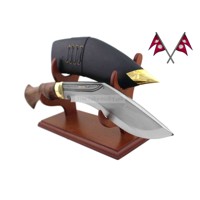
- 109.00 €price
- Availabilityavailable
- Original Nepalese Kukri knife in a leather case
- Kukri nôž Gurkha Black 9''
- NewWith giftdoprava zdarma
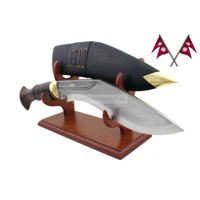
- 119.00 €price
- Availabilityunavailable
- Originálny nepálsky Kukri nôž v koženom puzdre
- Kukri knife Horn 8"
- NewWith giftdoprava zdarma
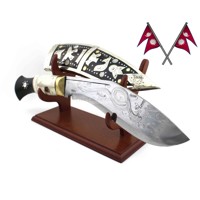
- 129.00 €price
- Availabilityavailable
- Original Nepalese Kukri knife with horn handle
- Kukri knife Horn 9"
- Newdoprava zdarma
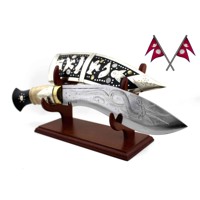
- 139.00 €price
- Availabilityavailable
- Original Nepalese Kukri knife with horn handle

